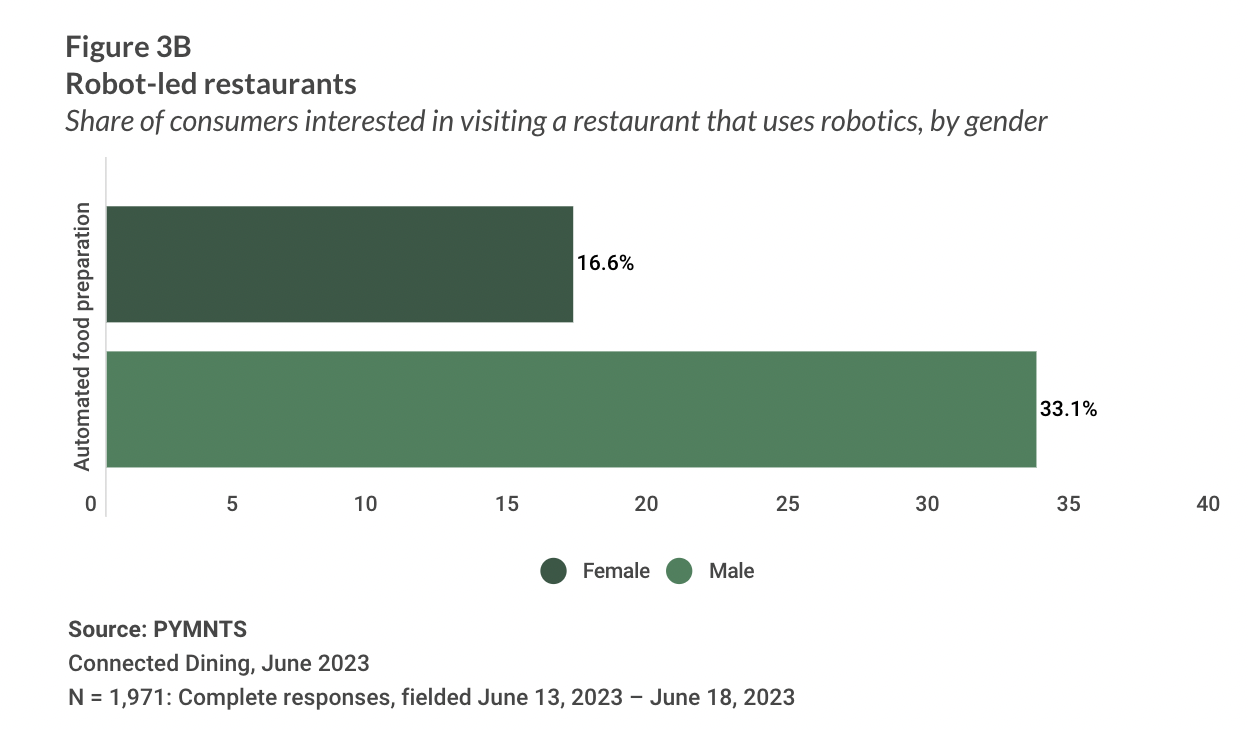Robo-Restaurants Are for the Boys

With automation increasingly catching on in the restaurant industry, PYMNTS research finds that men are twice as likely as women to have any interest in visiting robo-restaurants.
By the Numbers
PYMNTS’ new exclusive report, “Connected Dining: The Robot Will Take Your Order Now,” which draws from a survey of a census-balanced survey of nearly 2,000 U.S. consumers conducted last month, explores how consumers feel about different restaurant technologies and why.
The study reveals that, while 1 in 3 men are interested in visiting a restaurant that uses robotics, only half that share of women said the same.
Additionally, not only are men more interested in robo-restaurants — they are also more likely to visit them. Twenty-one percent of male consumers reported having gone to restaurants that use robotics for cooking, while just 10% of female consumers did so.

The Data in Context
Indeed, automation is becoming more popular throughout the restaurant industry. Take, for instance, Chipotle recently announcing a partnership with food automation company Vebu to test an avocado processing robot for guacamole, dubbed Autocado.
“We see opportunities for more automation in food prep and dish washing,” Chipotle Chief Customer and Technology Officer Curt Garner told PYMNTS in a recent interview. “These are areas that consistently come up in conversations with crew members. … We see potential in leveraging AI [artificial intelligence] to help our managers be more precise in the amount of food they’re prepping for their restaurants. Anything we can do to help our teams more easily recover from a strong sales day is an area we’re prioritizing.”
Meanwhile, Sweetgreen recently shared its intentions to roll out automated kitchens chainwide in the next five years, per CEO Jonathan Neman’s comments at William Blair’s 43rd Annual Growth Stock Conference.
William Blair’s meeting highlights note that Sweetgreen’s first test of an automated store has indicated that the technology works, increasing throughput, maintaining more consistent portions, boosting accuracy, and lowering the brand’s labor needs.

